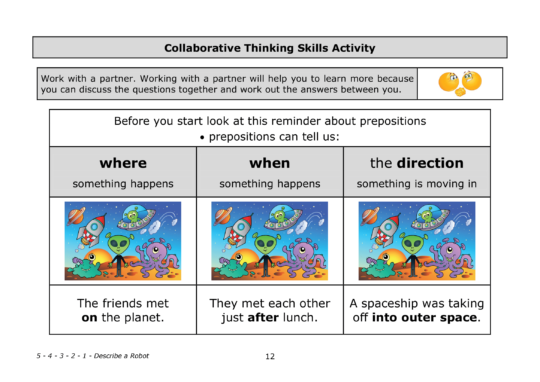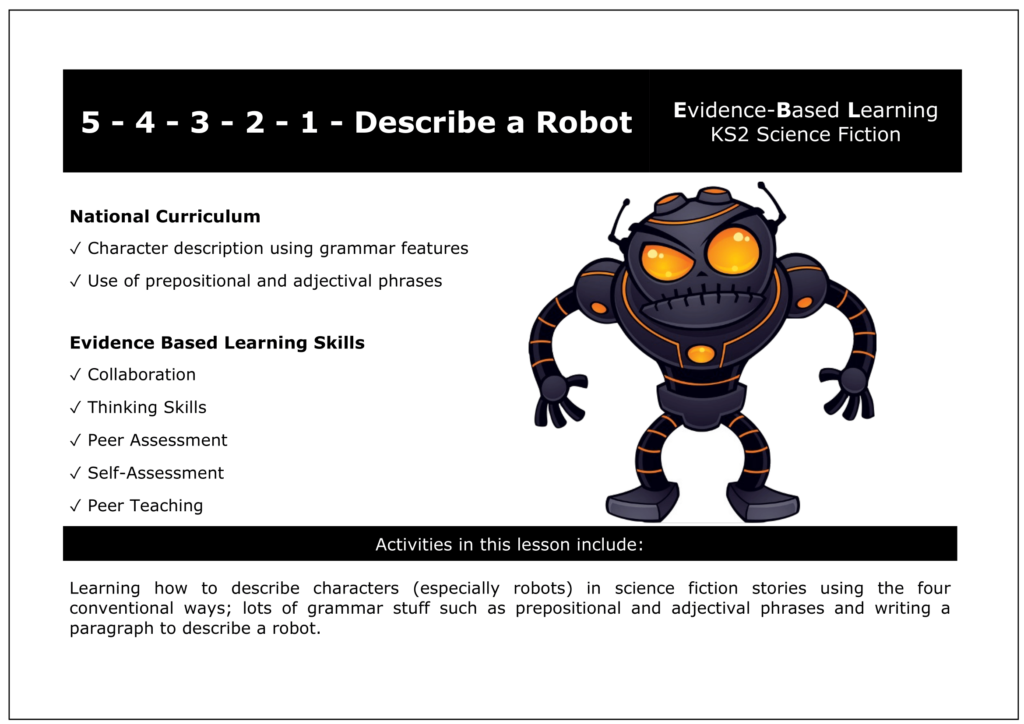Y5 & Y6 The Fox and the Crow
£3.00
KS2 National Curriculum:
✓ Interpreting characters’ motives and lessons
✓ Explaining the warning within a fable
✓ Writing a five-sentence original fable using model features
✓ Peer assessing for structure and moral clarity
Activities in this lesson include reminders about the main features of fables, reading the full text of The Fox and the Crow, answering higher and lower order questions about the fable, looking at the moral in a fable and breaking down The Fox and the Crow into five sentences.
There is a five-minute evidence-based CPD activity at the end of this lesson which will develop classroom teachers’ skill set. This CPD consists of a research extract on collaboration with a five-minute activity based on this extract.
Description
Recommended Year Group: Year 5/6
Focus: Understanding flattery and moral consequence
Skills Developed:
• Interpreting characters’ motives and lessons
• Explaining the warning within a fable
• Writing a five-sentence original fable using model features
• Peer assessing for structure and moral clarity
📘 National Curriculum Links:
• Reading – Comprehension: Inference and moral understanding
• Writing – Composition: Construct a short fable with clarity
• Spoken Language: Paired talk, explanation and reasoning
• Thinking and Learning: Moral evaluation, collaborative analysis
These evidence-based learning (EBL) lessons are based on classroom practice that has been proven, by research, to maximise thinking, learning and attainment. From an extensive review of educational research, we identified the eight key classroom thinking and learning skills that were common across these research papers. We named these eight key skills “EBL skills”.
EBL skills have been proven by research to maximise learning because they combine the most productive thinking skills with the most effective learning behaviours. Each of our evidence-based learning lessons uses the English curriculum as a framework through which the eight EBL skills are delivered.
Teachers also have the opportunity to add to their own skill set or refresh their existing skills with our five-minute CPD activity, based on one of the EBL skills used in this lesson.
The skills in bold below are the EBL skills developed in this Fables lesson. Click on each skill to learn more about that skill.
- Collaboration
- Thinking Skills
- Peer Assessment
- Peer Teaching
- Self-Assessment
- Metacognition
- Self-Regulation
- Independent Learning
1 review for Y5 & Y6 The Fox and the Crow
Only logged in customers who have purchased this product may leave a review.
Related products
-


Introduction to Fables
£3.00 Add to basket £3.00Add to basket
£3.00Add to basketKS2 National Curriculum:
✓ Identifying characters, setting, and moral structure in fables
✓ Understanding the role of animal characters and human traits
✓ Summarising and explaining key features using a visual guide
✓ Reflecting on the purpose of fables in teaching lessonsActivities in this lesson include learning about the features of fables, answering higher and lower order questions about fables and writing a tweet explaining what a fable is.
There is a five-minute evidence-based CPD activity at the end of this lesson which will develop classroom teachers’ skill set. This CPD consists of a research extract on metacognition with a five-minute activity based on this extract.
VIEW -


Y5 Describe a Robot
£3.00 Add to basket £3.00Add to basket
£3.00Add to basketKS2 National Curriculum:
✓ Character description using grammar features; use of prepositional and adjectival phrases.
Activities in this lesson include learning how to describe characters (especially robots) in science fiction stories using the four conventional ways; lots of grammar stuff such as prepositional and adjectival phrases and writing a paragraph to describe a robot.
The five-minute evidence-based CPD activity at the end of this lesson offers teachers an opportunity to add to their skill set. The CPD activity in this lesson develops peer teaching by asking the question “what are the benefits of peer teaching?”
VIEW -


Y6 Writing a Fabulous Fable
£3.00 Add to basket £3.00Add to basket
£3.00Add to basketKS2 National Curriculum:
✓ Planning characters, conflict, and moral outcome
✓ Using past tense, third person, and sentence control
✓ Writing a complete fable using all structural features
✓ Using peer feedback and editing toolsActivities in this lesson include a fully-scaffolded creative writing activity that supports pupils in the creation and writing of their own fable. This support includes how to use adjectives, verbs, adverbs, using the correct punctuation and finally how to structure the fable correctly.
There is a five-minute evidence-based CPD activity at the end of this lesson which will develop classroom teachers’ skill set. This CPD consists of a research extract on peer assessment with a five-minute activity based on this extract.
VIEW -


The Plot of a Pirate Story
£3.00 Add to basket £3.00Add to basket
£3.00Add to basketThis lesson looks at the main features of pirate stories including good and bad characters, treasure maps and typical plots. It also includes learning how to design a poster. Activities include designing a poster for the classroom to explain the plot of a pirate story and drawing a treasure map.
There is a five-minute evidence-based CPD activity at the end of this lesson which will develop classroom teachers’ skill set. This CPD consists of a research extract on collaboration with a five-minute activity based on this extract.
VIEW






Philipem (verified owner) –
We asked a.i. to review this lesson. This is what it said: Teach English and Evidence-Based Learning Skills Together with “The Fox and the Crow” lesson ⭐⭐⭐⭐⭐
I’ve discovered an excellent KS2 resource for teaching the classic fable, The Fox and the Crow, in a way that develops English skills alongside key evidence-based learning skills. This clever lesson incorporates reading comprehension, collaboration, thinking skills, peer assessment, metacognition and self-assessment into the learning process.
Useful student activities include:
✅ Revisiting the key features of fables
✅ Reading the full text of The Fox and the Crow
✅ Answering higher and lower order questions on the fable
✅ Interpreting the moral of the fable
✅ Summarising the fable in five sentences
As pupils progress through the activities, they will be using the following evidence-based skills: collaboration, thinking skills, peer assessment, metacognition, independent learning and self-assessment. The emoticons provide a great way for students to reinforce which skill they are working on.
There is also a 5 minute CPD activity for teachers focused on collaboration. This consists of a research overview on the benefits of collaborative learning paired with an action step for teachers to generate their own checklist of collaborative skills for students to develop.
I would highly recommend this lesson for teaching a classic fable in an engaging way whilst expanding your own knowledge of evidence-based skills development. I am awarding it 5 stars as a comprehensive, ready-to-use resource.